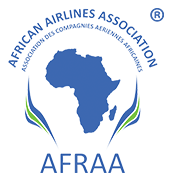Rolls-Royce (LSE: RR., ADR: RYCEY) today announces a further key milestone, a world industry first, has been achieved in its hydrogen research project.
Both Rolls-Royce and its partner easyJet are committed to being at the forefront of the development of hydrogen combustion engine technology capable of powering a range of aircraft, including those in the narrow-body market segment, from the mid-2030s onwards.
Now, working with Loughborough University in the UK and the German Aerospace Centre Deutsches Zentrum für Luft-und Raumfahrt (DLR), Rolls-Royce has proven a critical engine technology that marks another significant step in the journey to enabling hydrogen as an aviation fuel.
Tests on a full annular combustor of a Pearl 700 engine at DLR in Cologne running on 100% hydrogen have proven the fuel can be combusted at conditions that represent maximum take-off thrust.
Key to that achievement has been the successful design of advanced fuel spray nozzles to control the combustion process. This involved overcoming significant engineering challenges as hydrogen burns far hotter and more rapidly than kerosene. The new nozzles were able to control the flame position using a new system that progressively mixes air with the hydrogen to manage the fuel’s reactivity. Rolls-Royce is pleased to confirm that combustor operability and emissions were both in line with expectations.
The individual nozzles were initially tested at intermediate pressure at Loughborough’s recently upgraded test facilities and at DLR Cologne before the final full-pressure combustor tests took place at DLR Cologne.
Last year, easyJet and Rolls-Royce also set a world first by successfully running a modern aero engine, an AE2100, on green hydrogen at Boscombe Down, UK.
These recent tests mean the combustion element of the hydrogen programme is now well understood, while work continues on systems to deliver the fuel to the engine and integrate those systems with an engine.
Grazia Vittadini, Chief Technology Rolls-Royce, said: “This is an incredible achievement in a short space of time. Controlling the combustion process is one of the key technology challenges the industry faces in making hydrogen a real aviation fuel of the future. We have achieved that, and it makes us eager to keep moving forward. I
want to thank easyJet, Loughborough University and DLR for their dedication and support to reach this milestone.”
Johan Lundgren, CEO of easyJet, said: “We believe hydrogen is the future of short-haul aviation and the
success of this test and progress being made demonstrates that this is becoming ever closer. We remain optimistic that it will play a critical role in helping us achieve the ambitious goals we set out in our net zero
roadmap.”
Professor Dan Parsons, Pro Vice-Chancellor for Research and Innovation, Loughborough University, said: “In conjunction with its partners, the National Centre for Combustion and Aerothermal Technology (NCCAT) at Loughborough is delighted to have supported the landmark testing and development of advanced aerospace fuel spray nozzles utilising hydrogen fuel. This is a major advance towards net zero aviation.”
Markus Fischer, Divisional Board Member Aeronautics of DLR, said: “This is an outstanding success story and we are more than happy to have contributed our hydrogen testing capabilities. It was very exciting supporting this technology journey and seeing the burner technology mature in various rigs at our Institute of Propulsion Technology. This underlines again DLR’s capabilities in complex applied research and the achievement, at such a high pace, was supported by our experience in real-scale testing of ground-based gas turbines.”
The technologies tested at Loughborough and DLR will now be incorporated into the learning from the Boscombe Down tests as Rolls-Royce and easyJet prepare for the next stage of testing – a full gas hydrogen ground test on a Pearl engine.
That will in turn lead to a full ground test on a Pearl engine using liquid hydrogen – both easyJet and Rolls-Royce have a shared ambition to then take the technology to flight.
Rolls-Royce receives support for hydrogen research through the UK’s Aerospace Technology Institute HyEST programme, Germany’s LUFO 6 WOTAN programme, and the European Union’s Clean Aviation CAVENDISH
programme. Loughborough is a partner in HyEST and CAVENDISH. DLR is a partner in WOTAN and CAVENDISH. easyJet has provided investment to support the development of hydrogen combustion engine technology for
narrow-body aircraft.
Images of testing at both DLR and Loughborough University are available at
https://www.flickr.com/gp/rolls-royceplc/3mGu4hEB45
About Rolls-Royce Holdings plc
1. Rolls-Royce develops and delivers complex power and propulsion solutions for safety-critical applications in the air, at sea and on land. Our products and service packages enable our customers to connect people, societies, cultures and economies together; they meet the growing need for power generation across multiple industries; and enable governments to equip their armed forces with the power required to protect their citizens.
2. Rolls-Royce has customers in more than 150 countries, comprising more than 400 airlines and leasing customers, 160 armed forces and navies, and more than 5,000 power and nuclear customers. We are committed to making our products compatible with net zero carbon emissions to meet customer demand for more sustainable solutions.
3. The annual underlying revenue was £12.69 billion in 2022, and the underlying operating profit was £652m.
4. Rolls-Royce Holdings plc is a publicly traded company (LSE: RR., ADR: RYCEY, LEI:213800EC7997ZBLZJH69)
